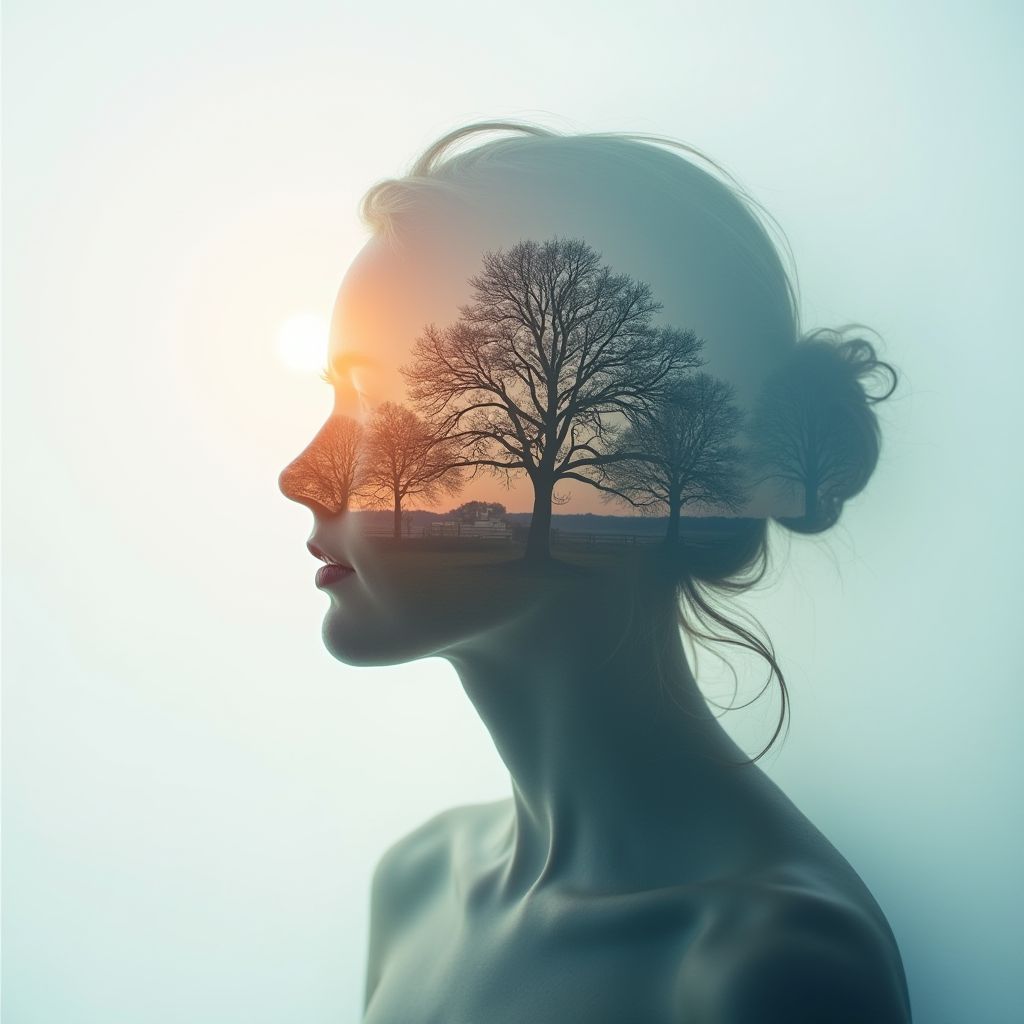In this double exposure image, you see a blend of reality and abstract art. A real-life scene, which features an unknown subject, is superimposed on top of a nature background, creating a mysterious atmosphere. The result is impressive, offering a sense of intrigue and curiosity. The colors are pastel and gradient, giving it a dreamy, holographic look. The blend appears to be on a blurred, mesh-like background, allowing elements to stand out distinctly. It’s a complex concept representing the unknown aspects of nature and the environment. The image has a resolution of 1024×1024 pixels, and it was generated using the flux1-dev-fp8 model with version f201v1101-634-g37301b22. To decode the technical details, a mathematical approach called “double exposure” has been used.
Here, there’s an artwork that combines nature and the unknown, merging them together on a dreamy holographic background. The model used for creating this image is the flux1-dev-fp8, version f201v1101-634-g37301b22, using the distilled CFG scale with a size of 1024×1024 pixels. The mysterious image conveys a sense of curiosity, inviting viewers to perceive beyond its surface.
I would like to know the double exposure employed in the creation of this artwork. How can I learn more about it?
The double exposure technique used in this artwork is a photography and post-processing method to create a surreal effect. You can learn more about it by researching the concept of double exposure photography online, which involves overlaying two images to form a new unique composition. You can also explore Adobe Photoshop or other editing software to try creating similar images yourself. Additionally, you can learn about the model used, flux1-dev-fp8. This model, also known as the draw and paint model, uses Constrained Family GANs (CFGs) to create images with finer details based on images fed into it. To understand the process better, study the technical details of Constrained Family GANs (CFGs) and how they combine deep learning algorithms to generate images drawn

